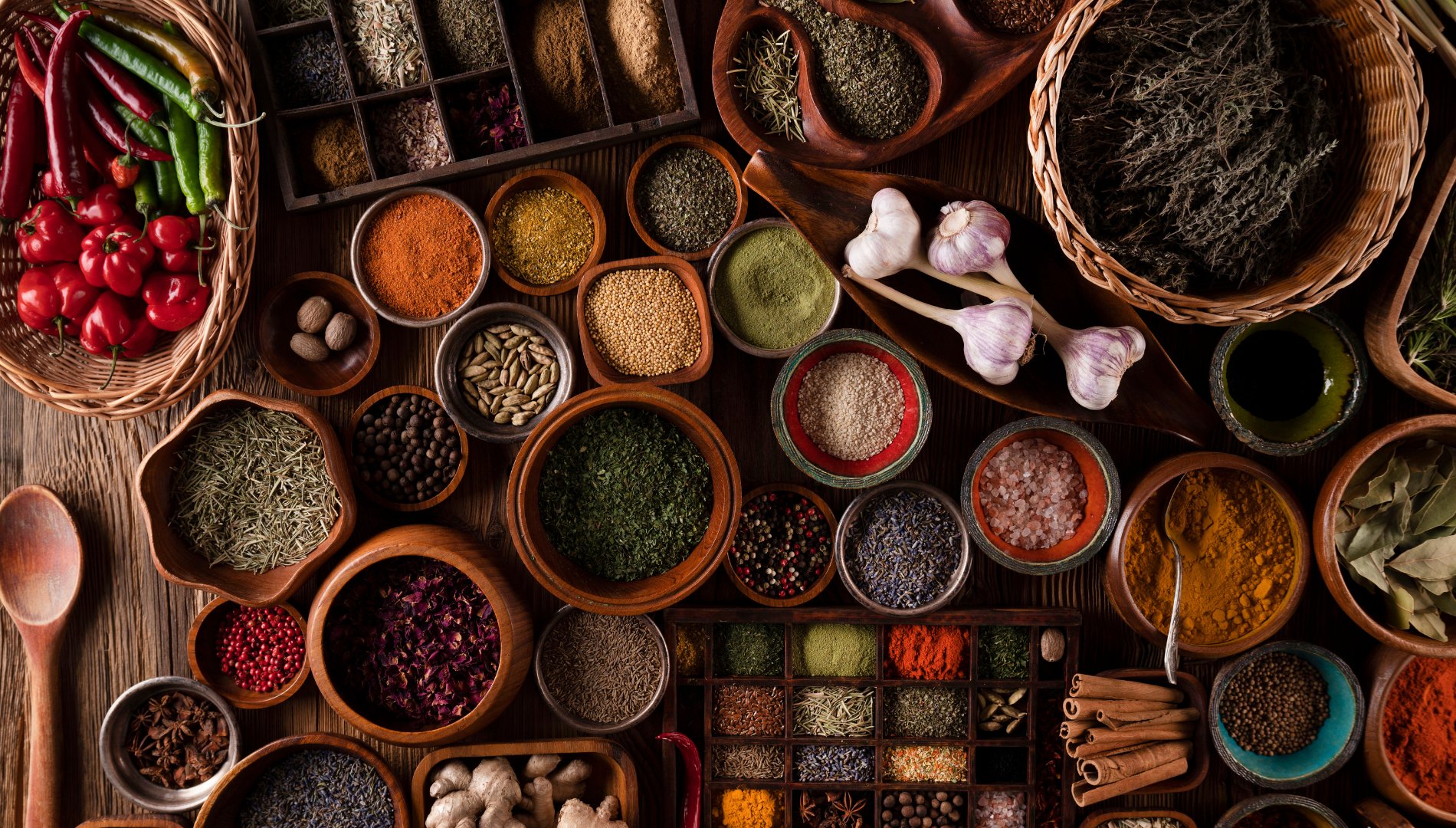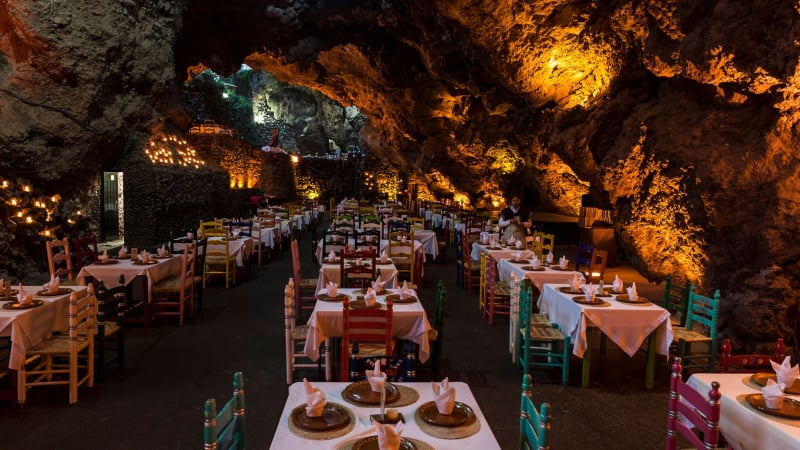A Vietnamese dining table without "side dishes" is not complete.- This is the opinion of writer Piumi Rajapaksha posted on the travel website The Culture Trip.
Spices, the magical ingredients considered the "soul" of cuisine, are the key factor that shapes the identity and unique characteristics of each dish. Dipping sauce, a delicate combination of spices, acts as the perfect "bridge", helping to sublimate the flavor of the dish when dipped with it. Vietnamese cuisine is proud to possess a rich treasure trove of spices and dipping sauces, which not only bring wonderful taste experiences, but also contain valuable health values, contributing to the balance of yin and yang, cold and heat in each dish.
The art of using spices, with sophistication and ingenuity, has become an impressive highlight, contributing to the colorful culinary culture of Vietnam. Let's take a look at some of the unique spices and sauces of each region through the spice and sauce map.
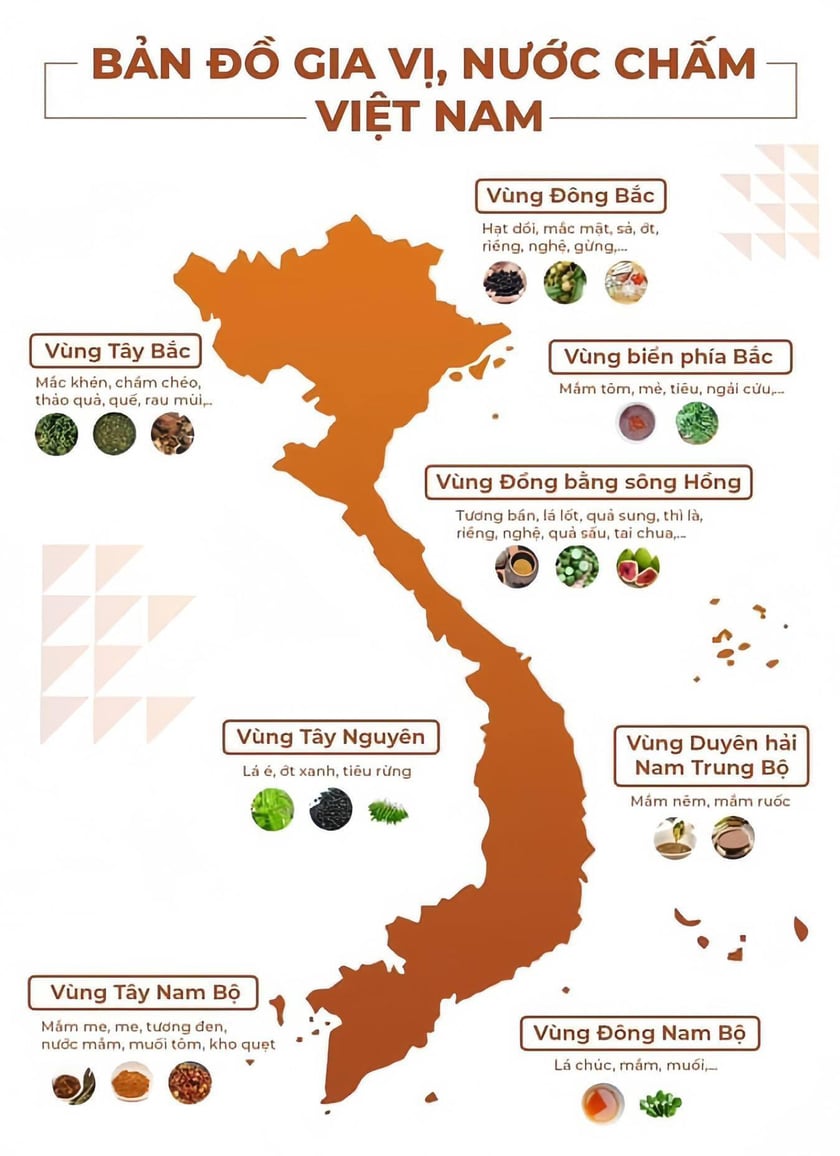
Map of Vietnamese spices and sauces goes viral on social networks
Northeast, the taste of the mountains and forests
With the dining perspective combining vegetables, tubers, and fruits available in nature, the dishes here all give diners a very unique and interesting feeling. In the cuisine of the Northeast region of Vietnam, Doi seeds are a typical spice with an extremely attractive and seductive aroma. Doi seeds have a characteristic warm aroma, widely used in grilled and steamed dishes, or as a dipping sauce, arousing the taste buds and stimulating digestion. Mac Mat, with its fragrant leaves and sweet and sour fruit, is an indispensable ingredient in grilled and roasted dishes, creating a unique and unforgettable flavor.
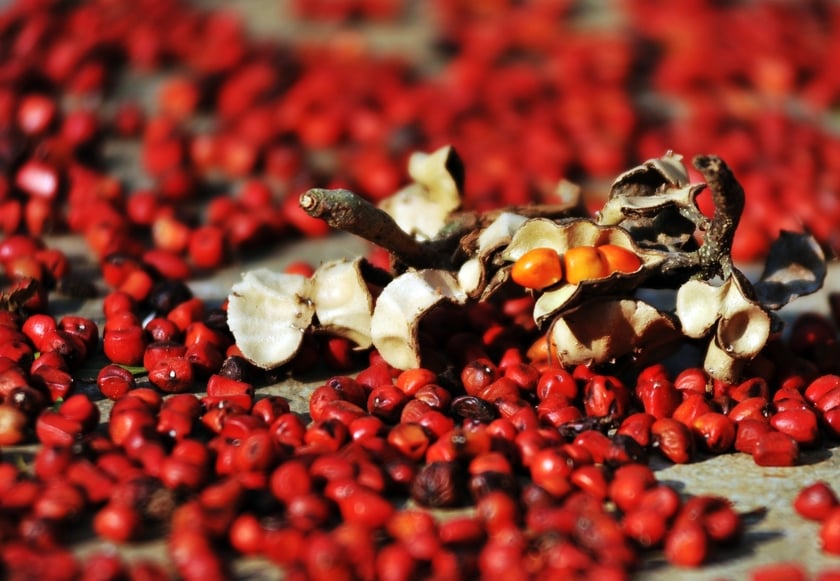
Doi seeds – Traditional spice of the Northwest mountainous region

Mac Mat leaves are indispensable in mountain cuisine.
Lemongrass, chili, galangal, turmeric, ginger, familiar spices, under the talented hands of the Northeastern people, have been transformed and combined in a delicate way, creating unique flavors, suitable for the climate and taste of the region.

Familiar ingredients prepared in a unique way
In particular, Cham Cheo, the "national dipping sauce" of the Thai people, is a perfect combination of chili, garlic, Mac Khen, Doi seeds and herbs, bringing a spicy, fragrant flavor that conquers anyone's taste buds.

This is the most typical dipping sauce and is an indispensable dish on the Thai people's dining table.
Herbs with Northwest culinary culture
The Northwest is the land of ethnic minorities with the characteristics of the Thai, Mong... creating a very different culinary culture that no other place has. If anyone has ever set foot on this land, they will enjoy dishes with famous spices of the Northwest region such as: mac khen, cham cheo combined with more popular spices such as pepper, cinnamon, chili,... All create a very unique color and flavor of cuisine.
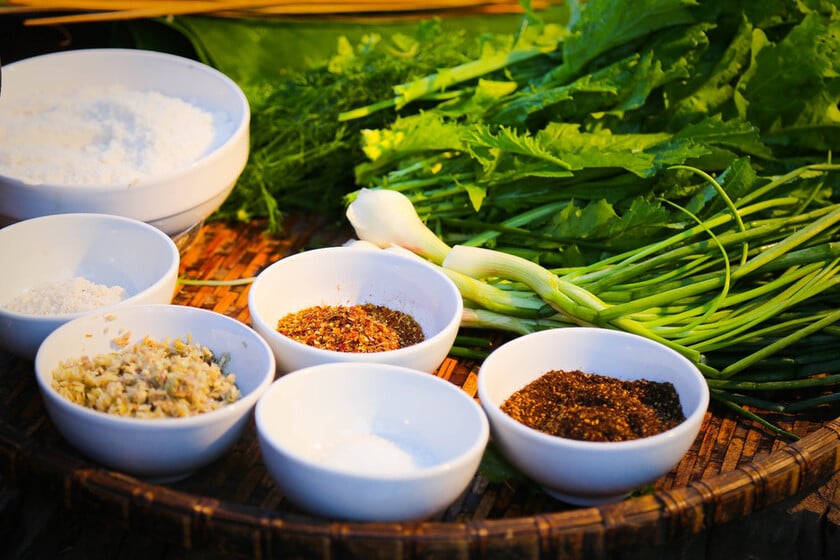
A characteristic of Northwestern cuisine is the use of spices from mac khen, doi seeds, mac mat, wild vegetables... to create a unique flavor.
Mac Khen, the famous "wild pepper", has a warm aroma and is the soul of many Northwest dishes. Cardamom, with its characteristic aroma, is used in stews and sausages, bringing a warm, unique flavor. Northwest cinnamon, with its strong aroma, is not only a precious spice but also a precious medicine, contributing to the richness of the cuisine here.
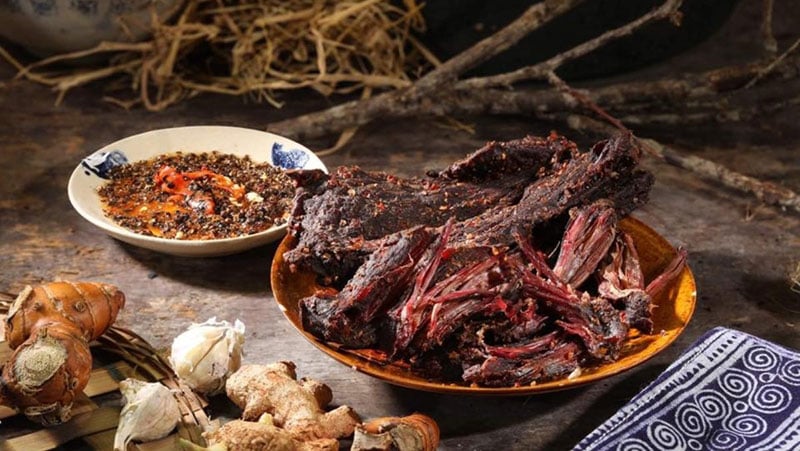
Citrus vegetables, a typical vegetable of the region, have a slightly sour taste, used in soups and salads, creating a fresh, elegant meal. The unique combination of mountain spices, along with creativity in preparation, has created a unique Northwest cuisine, rich in cultural identity.
Northern Sea Spice Symphony
The cuisine of the northern coastal region of Vietnam is a delicate blend of the salty taste of the ocean and the diversity of typical spices. Here, spices are not only cooking ingredients but also cultural symbols, closely associated with the daily life of coastal people.
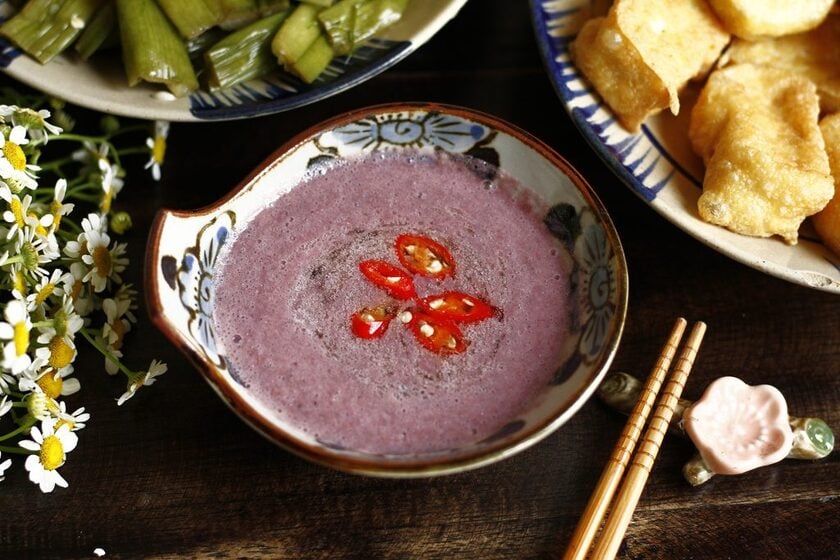
Shrimp paste is considered the "national soul" of the nation.
Shrimp paste, the "soul" of coastal cuisine, has a rich, salty flavor, used in many typical dishes such as vermicelli with shrimp paste, crab soup, or as a dipping sauce. Fermented rice, with its characteristic sour taste, is an indispensable ingredient in sour soup, crab hotpot, or as a seasoning for marinating meat. Pepper, a familiar spice, but in the northern coastal region, pepper is used in a special way, creating unique flavors for seafood dishes, helping to remove fishy odors and warm the body. Mugwort, a typical vegetable of the region, has a slightly bitter taste, used in soups, stir-fries, or as a seasoning for fried eggs.
The elegant, refined flavor of the Red River Delta
The cuisine of the Red River Delta, where the quintessence of Vietnamese culture and cuisine converges, bears the mark of the long-standing rice civilization. The spices used by the people, creating a unique identity for the regional cuisine, include lemon, vinegar, sour plum, pepper, chili, ginger, onion, garlic, diluted fish sauce, shrimp paste, etc. Each spice has a unique flavor, used skillfully and delicately, creating harmony and balance for the dish.

The delicate flavors of the people of the Red River Delta
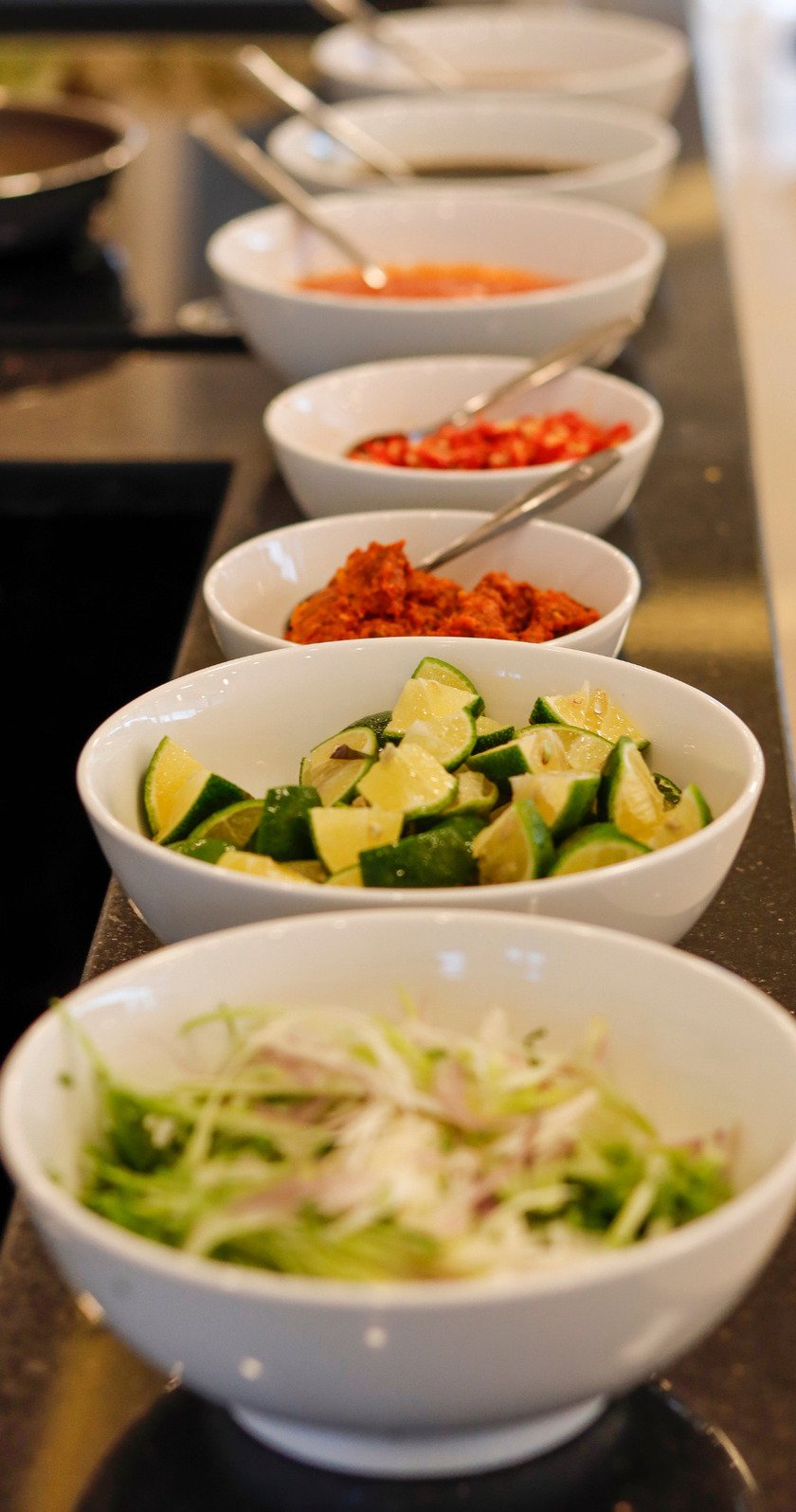
In addition, when eating cold dishes, it is often accompanied by hot dipping sauce. Each dish has a very harmonious flavor, not too sour, too spicy, too salty or too strong, typical of the philosophy of yin and yang balance that has existed in the daily life of Vietnamese people for generations.
The rich spice world of the Central Highlands
The cuisine of the Central Highlands, reflecting the liberal and close-to-nature lifestyle of the ethnic communities here, is a colorful picture with a richness and uniqueness that is unmatched anywhere. In particular, the art of combining spices has created typical dishes with delicious and unique flavors, conquering the taste buds of anyone.

The taste of the Central Highlands mountains and forests
In addition to the basil leaves, the spice that has become a symbol in the famous chicken hotpot, chili holds an important position in the world of Central Highlands spices. Chili is present in almost all dishes, from fragrant grilled dishes, crispy fried dishes, rich stir-fried dishes to light boiled dishes and hot soups. Chili not only enhances the flavor of the dish, but also brings a characteristic spicy taste, awakens the taste buds and creates an irresistible appeal.
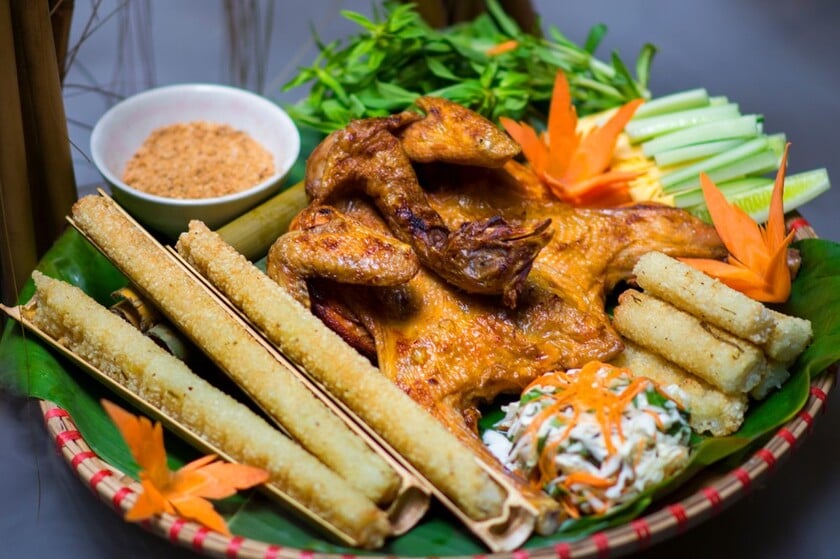
Strong, spicy flavor is the highlight
Central Highlands spices are not just simple ingredients, but also a symbol of culture, a link connecting people with the majestic mountains and forests. Each spice has its own story, contributing to the richness and diversity of the cuisine here.
Simple yet sophisticated South Central Coast spices
The cuisine of the South Central Coast bears the mark of the sea, with diversity and richness in each dish. Here, the cuisine is not too fussy about form, but conquers diners by the freshness, abundance of processed ingredients and the unique flavor that cannot be mistaken. The spices used in the cuisine of the South Central Coast are often very close and familiar, including green onions, diluted fish sauce, tamarind and sugar. The harmonious combination of these spices has created dishes with the typical flavor of the sea. In addition to the above spices, the cuisine of the South Central Coast also uses many other spices such as chili, garlic, ginger, ... to enhance the flavor of the dish. However, simplicity and sophistication are still the characteristics of the cuisine here.
Sweet taste of the Southwest region
Southwestern cuisine bears the mark of a fertile land, with simplicity and liberality in the way of preparation. The dishes here are not elaborate in form, but are extremely diverse and varied in flavor, especially the sweet, spicy, and fatty flavors characteristic of the use of coconut water.

Southwestern cuisine is famous for its sweet dishes.
Coconut water is considered the "soul" of many Southwestern dishes, from traditional cakes such as banh in, banh men, banh it, banh bo... to delicious desserts such as che kiem, che chuoi, and also sticky rice, nem nuong, chicken porridge, roasted chicken... Coconut water or coconut rice flakes are used to increase the richness and sweetness, creating a unique, unforgettable flavor.
In addition to coconut water, Southwestern cuisine also uses many other spices such as chili, garlic, onion, lemongrass, fish sauce... to create diversity and richness for dishes. However, the characteristic sweetness of coconut water is still the outstanding factor, creating a unique feature for the cuisine here.





